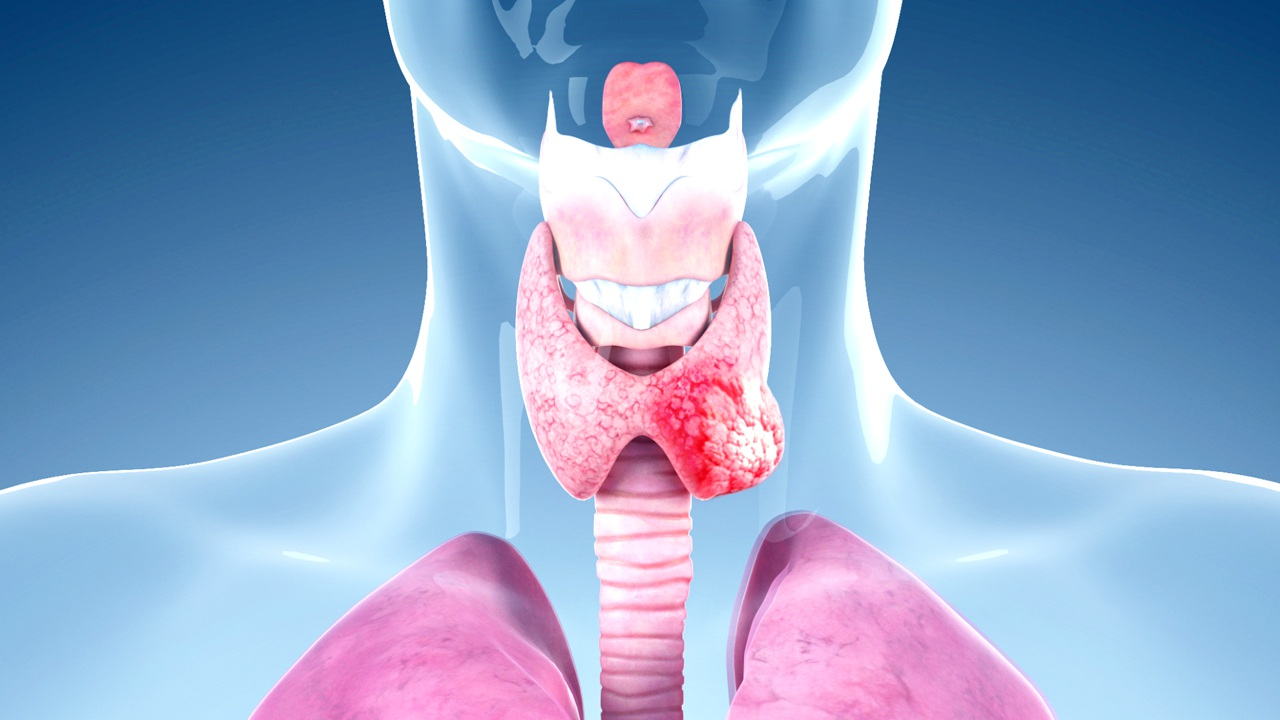

Thyroid cancer, although relatively rare in comparison to other cancers, has been increasing in incidence over the past few decades. It originates from the thyroid gland, an important endocrine organ that controls metabolism by producing hormones. Most thyroid cancers are slow-growing and easily curable, but some aggressive forms need specialised treatment. It is important to know the types, risk factors, diagnosis, and treatment of thyroid cancer for proper management.
Types of Thyroid Cancer
Thyroid cancers are divided into a number of different types according to cellular origin and behavior:
Papillary Thyroid Carcinoma (PTC) – Most common type, occurring in almost 80% of cases. It develops slowly and is usually localised but can spread to lymph nodes.
Follicular Thyroid Carcinoma (FTC) – Accounts for about 10-15% of cases, often spreading via the blood to distant organs, especially the lungs and bones.
Medullary Thyroid Carcinoma (MTC) – This is the origin from parafollicular C cells, representing approximately 3-4% of all cases and related to genetic syndromes such as multiple endocrine neoplasia (MEN 2A and 2B).
Anaplastic Thyroid Carcinoma (ATC) – A less common but aggressive form that quickly metastasises, commonly resistant to conventional therapy.
Hurthle Cell Carcinoma – A form of follicular carcinoma with greater potential for metastasis and recurrence.
Risk Factors and Causes
Multiple causes are responsible for the onset of thyroid cancer. Genetic susceptibility is a major cause, especially for medullary thyroid carcinoma. Radiation exposure, especially in children, increases the risk enormously. Iodine deficiency has been associated with follicular thyroid cancer, whereas too much iodine can lead to papillary carcinoma. Other causative factors are gender, as females are more prone, and age, since most cases occur between 30 and 60 years.
Symptoms and Diagnosis
- Thyroid cancer may be asymptomatic in its initial stages. As the disease advances, it can produce the following symptoms:
- A constant lump or swelling of the neck
- Hoarseness or voice change
- Swallowing difficulty
- Swollen lymph nodes
- Unexplained loss of weight
Diagnosis encompasses a blend of clinical assessment, imaging, and biopsy methods. Ultrasound is the major imaging tool used for thyroid nodule evaluation, whereas fine-needle aspiration (FNA) biopsy is used to confirm malignancy. In some instances, molecular testing is employed to establish genetic mutations that may affect treatment plans.
Treatment Alternatives
Management plans vary depending on the kind, extent, and aggressiveness of the malignancy.
Surgical Procedure – Total or partial thyroidectomy continues to be the standard of care, especially in localised tumors.
Radioactive Iodine Therapy (RAI) – Given after surgery to kill remaining cancer cells in differentiated thyroid cancers.
Hormone Replacement Therapy – Given after thyroidectomy to support metabolic equilibrium and suppress tumor relapse.
Targeted Drug Therapy – Utilized in advanced or refractory conditions, focusing on selective molecular targets.
External Beam Radiation and Chemotherapy – Usually reserved for aggressive and refractory variants such as anaplastic carcinoma.
Prognosis and Follow-Up
The majority of thyroid cancers, especially papillary and follicular carcinomas, carry an excellent prognosis with proper management. Close follow-up, thyroglobulin surveillance, and imaging studies are necessary to catch recurrence early. New developments in personalised medicine and molecular therapy improve outcomes and provide new promise for patients with advanced disease.
Conclusion
Thyroid cancer is still a very curable cancer if caught early and handled well. Further research and innovative advances in surgery, targeted agents, and personalised medicine are redesigning the therapy of thyroid cancer, providing superior survival and an enhanced quality of life for individuals with the disease.


